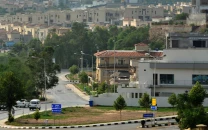CPEC to CPAEC: aspiration to actualisation
The recent China-Afghanistan-Pakistan tripartite meeting held at Beijing has rekindled the hopes.

If Afghanistan joins CPEC, the entwined destinies of the peoples of Pakistan and Afghanistan could bring socioeconomic development, improve bilateral relations and usher peace and stability in the region. This was the focus of my PhD (2017-2021). Though it seemed unlikely then, but a few developments strengthened the hopes.
Firstly, on Sept 8, 2019, in a Pakistan-Afghanistan-China trilateral meeting, construction of Peshawar-Kabul motorway under the banner of China-Afghanistan-Pakistan Plus Cooperation (CAPPC) was agreed to. This aimed at jointly working towards promoting trade and connectivity. It was perceived as a move paving the way for Afghanistan joining CPEC.
Second was the signing of China-Iran comprehensive partnership MoU in 2020. Estimated at $400 billion, and spread over 25 years, it encompassed development of Chabahar through which the Iran-Afghanistan-Central Asia transportation corridor is to be connected to the wider BRI project. It will help in modernising oil and gas sectors, establishment of industrial zones, military and technological cooperation, and supply of Iranian oil to China on cheaper rates.
The recent China-Afghanistan-Pakistan tripartite meeting held at Beijing has rekindled the hopes. Deputy PM Ishaq Dar says that China will help develop Peshawar-Kabul Corridor, and it now seems more likely that Afghanistan will join CPEC in its own best interest.
Once Afghanistan decides to join it, CPEC can be renamed as China-Pakistan-Afghanistan Economic Corridor (CPAEC). Whatever the name, the essence lies in joining hands for emancipation of the societies of member states and whole of Eurasia, through enhanced economic collaboration.
The BRI, Iran-Afghanistan-Central Asia-China Corridor and CPEAC would complement each other multiplying dividends resulting in job creation, poverty alleviation, women empowerment, environmental protection and improved regional peace and stability. About 94% respondents of the survey conducted for the dissertation agreed to the fact that increased interdependence through BRI-CPEC/CPAEC will engender socioeconomic development as well as peace and stability.
Hit by foreign military interventions and internal strife, Afghanistan needs a fast paced socioeconomic development. Quickest solution to this predicament lies in transit trade, followed by development of industrial zones along CPAEC to augment Afghanistan's economic progression.
Significance of Pakistan as a conduit for trade by Afghanistan and Central Asia is undeniable. Afghanistan is also an essential channel in this connectivity. Its inclusion in BRI/CPEC will multiply benefits for whole of Eurasia.
Professor Arshin Adib Moghadam of SOAS opines that addition of Turkey, Iran and India to BRI and CPEC would make it more advantageous. He believes, "India has a Eurasian DNA, its alliance with the west is unnatural, and it will come back one day." India stands to gain immensely for its trade by East-West connectivity through Pakistan; a truck crossing Torkham or Chaman could reach India within 24 hours.
This article suggests complementing traditional statecraft with shared economic growth to optimise the potential of the resource-rich region through interdependence. One of the best examples is the formation of European Coal and Steel Community (ECSC) in 1951.
It was based on French Foreign Minister Schuman's idea that it would "make war not only unthinkable, but materially impossible". The ECSC really helped preclude conflicts in Europe, and laid the foundation of today's EU. Likewise, CPAEC offers requisite constituents to transform the Pakistan-Afghan relationship into a long-term mutually beneficial partnership.
The risks, apprehensions, irritants, opposition and attacks on CEPEC/CPEAC by inimical forces are likely to persist. However, Afghanistan, China and Pakistan must not be deterred by these challenges.
Inclusivity of the masses in CPAEC projects is the best security guarantee for it. When bread and butter of employees will come from these, they will secure and defend it against attacks. Collective gains and losses are likely to bring the member states into an enduring bond of mutually beneficial coexistence.














COMMENTS
Comments are moderated and generally will be posted if they are on-topic and not abusive.
For more information, please see our Comments FAQ